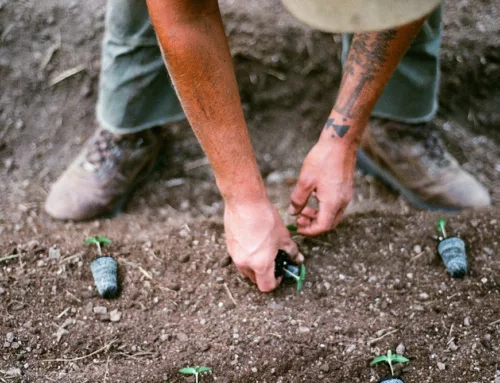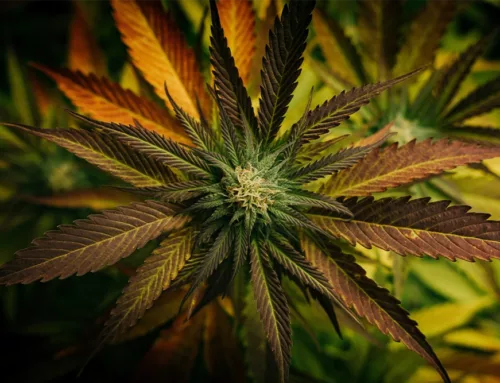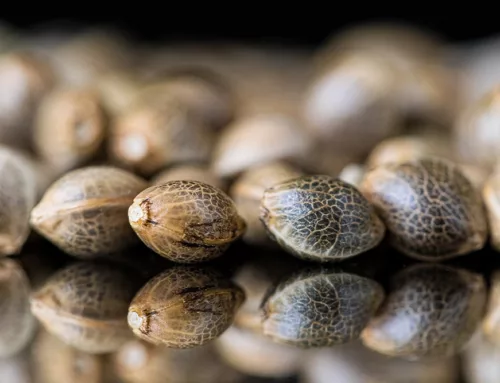18 Cannabis Nutrients First-Time Growers Need to Know
Embarking on the journey of cannabis cultivation can be an exciting venture. For first-time growers, one of the most crucial aspects to master is understanding the best nutrients for cannabis plants. A key element in this is the NPK ratio – nitrogen (N), phosphorus (P), and potassium (K). These nutrients form the cornerstone of cannabis plant nutrition.
In addition to the three macronutrients, there are 15 other essential minerals your plant requires, although in lesser amounts. Each of these nutrients helps your plant perform specific tasks throughout its growing cycle. Throughout this article, we will explain what each of these nutrients does for your plant and how you can provide them.
Sometimes, these nutrients are present in your soil but unavailable to the plant. This is called nutrient lockout, and it can happen when you overwater or are underwater, have too high or too low a pH, or have too much of one nutrient. With the knowledge provided in this article, you can avoid those pitfalls and provide well-balanced nutrition to your plants.
NPK Nutrient Ratio: Nitrogen, Phosphorus, and Potassium
The NPK ratio tells you how much nitrogen (N), phosphorus (P), and potassium (K) are in a plant fertilizer. It’s like a recipe for weed plant food. NPK elements are called macronutrients because they are required by plants in larger amounts compared to other nutrients for growth and health.
Nitrogen (N) is important during the vegetative stage and crucial for the development of leaves and stems. A deficiency can lead to stunted growth and yellowing leaves, while excess can cause leaf overgrowth, subpar flowers, and a harsh finished product. Once your plants have transitioned into flower and completed their “stretch,” you should let off the nitrogen.
Phosphorus (P) is essential for energy transfer, flowering, and root development. In cannabis, phosphorus is particularly crucial during the flowering stage. It aids in the development of dense, healthy buds and a strong root system. A lack of phosphorus can result in stunted growth and weak plants. The amount of phosphorus your plants need increases as they move into the flowering phase of growth.
Potassium (K) is vital for various plant functions. It helps in photosynthesis, nutrient uptake, and enzyme activation. Potassium ensures overall plant health, disease resistance, and water regulation. It also plays a role in the strength of the plant’s stems and the size of its leaves. Like phosphorus, the amount of potassium needed increases during the flowering phase of growth.
Three Secondary Nutrients for Weed Plants
Secondary cannabis plant nutrients are as important as the primary nutrients but are required in smaller amounts. They include Calcium, Magnesium, and Sulfur.
Calcium (Ca) is vital for the integrity of cell walls and membranes. It’s also important for root and leaf development and plays a role in cell division and signaling. Deficiencies often manifest as stunted growth, distorted new leaves, and necrotic leaf margins. While excess Calcium can interfere with the uptake of other nutrients such as Magnesium. Visible symptoms are often indirect, manifesting as deficiencies in other nutrients. The suggested ratio of Calcium to Magnesium is between 2:1 and 5:1. Remember your water source may contain Calcium and Magnesium, so keep this in mind when you are creating your feeding schedule.
Magnesium (Mg) is a central component of the chlorophyll molecule and is crucial for photosynthesis. It also plays a role in enzyme activation and is a building block of several essential plant structures and processes. Deficiency symptoms include interveinal chlorosis (yellowing between leaf veins) and older leaves turning yellow or reddish-purple. While toxicity can cause a decrease in calcium uptake, leading to deficiency symptoms. These can include necrotic spots on leaves, leaf curling, and underdeveloped root systems.
Sulfur (S) is a key element in the formation of certain amino acids, proteins, vitamins, and enzymes. It is also involved in chlorophyll formation and plays a role in the flavor and odor of many plants, including cannabis. Deficiency symptoms include yellowing of young leaves and stunted growth.
These secondary nutrients are crucial for balanced plant nutrition and optimal growth, especially in a high-yield, nutrient-intensive setting like cannabis cultivation. They work in concert with primary and micronutrients to ensure overall plant health and productivity.
Micronutrients for cannabis plants
Micronutrients, though required in small amounts, are important in the health and development of plants, including cannabis. Each has distinct functions, and imbalances in their levels can lead to deficiencies or toxicities, affecting plant growth and yield.
Boron (B) is crucial for cell wall formation and reproductive growth. Deficiency in boron leads to poor cell wall strength and distorted growth, while toxicity causes leaf burn, chlorosis, and necrosis, particularly at leaf tips.
Chlorine (Cl), involved in osmosis, photosynthesis, and ionic balance, is rarely deficient but can cause wilting and chlorosis when it is. Toxicity, usually due to excess salt, leads to leaf burn and wilting.
Copper (Cu) plays an essential role in photosynthesis and overall plant metabolism. A deficiency might manifest as dark green, twisted, or misshapen young leaves, whereas toxicity can lead to leaf discoloration and inhibited growth.
Iron (Fe) is critical for chlorophyll synthesis and enzyme function. Iron deficiency causes interveinal chlorosis in young leaves. Toxicity is rare but can result in bronzing and chlorosis in new leaves.
Manganese (Mn) is vital for photosynthesis, nitrogen assimilation, and enzyme activation. Deficient plants show interveinal chlorosis and necrotic spots on older leaves, while toxicity can cause dark spots or crinkling of leaves.
Molybdenum (Mo), important for nitrogen fixation and assimilation, shows deficiency symptoms like nitrogen deficiency, such as yellowing and stunting. Toxicity of molybdenum is very rare but can cause leaf edge cupping or scorching.
Zinc (Zn) is essential for hormone production and internodal elongation. Zinc deficiency leads to interveinal chlorosis, reduced leaf size, and distorted growth. In case of toxicity, it leads to symptoms of iron deficiency and stunted growth.
Silica (Si) strengthens cell walls and enhances drought and pest resistance. A lack of silica results in weak stems and increased susceptibility to stress, but toxicity is not a concern as it’s not easily absorbed in excessive amounts.
Cobalt (Co), though less significant for cannabis and more important for nitrogen-fixing in leguminous plants, can have impacts when deficient, mainly affecting nitrogen-fixing bacteria, but is rarely toxic.
Ensuring a balanced supply of these micronutrients and maintaining appropriate pH levels in the soil or growth medium is crucial for optimal plant health and development. Regular testing and careful observation can help limit any micronutrient imbalances.
Organic vs synthetic nutrients
The choice between organic and synthetic nutrition for weed can significantly impact the growing experience. Organic nutrients, derived from animal waste products like manure, bone, feathers, and blood, not only feed the plant but also enrich the soil. They release nutrients slowly, making them less likely to cause nutrient burn.
Synthetic nutrients are manufactured and provide plants with immediate nutrient access. However, they can increase the risk of nutrient burn and might not be as environmentally friendly.
Hydroponic v soil nutrients
The choice between hydroponic and soil-based growing methods affects how the nutrients are delivered to the plants. Hydroponic nutrients are fed through the irrigation system and need careful monitoring for pH and electrical conductivity. Soil nutrients, on the other hand, rely on the health and texture of the soil, with organic matter and microbial activity playing significant roles in nutrient availability.
Indoor vs outdoor nutrients
Indoor growing environments demand precise nutrient management to compensate for artificial lighting and controlled conditions. There is a lot of equipment involved when growing cannabis indoors to ensure your plants are feeding and absorbing essential nutrients correctly. From tents, lights, air exchange, and other environmental controls, to plants, pots, growing media, and the nutrients themselves. It can cost quite a bit to ensure your plants are consuming nutrients efficiently indoors as humidity, temperature, and lighting affect your plant’s ability to feed.
Outdoor growing, cultivators must adjust their nutrient solution or regime based on natural soil conditions and environmental factors. To provide an optimal nutrient source, soil must be rich in organic matter like compost and amended with organic fertilizers like kelp and neem meal. Plants grown outdoors in the ground can reach massive sizes and may require additional amendments and water. Both methods require a tailored approach to ensure plant health and productivity.
How to feed your cannabis plants
Feeding your cannabis plants correctly is a critical skill. This includes understanding the different needs during the vegetative growth and flowering stages, recognizing the signs of nutrient deficiencies or excesses, and knowing how to adjust the feeding schedule and recipe accordingly. Regular monitoring and adjustments are key to successful cannabis cultivation.
In the earlier stages of cannabis growth, your plant does not need nearly as many nutrients as it does in the flowering stage of growth. The easiest way to ensure young plants have sufficient nutrients is to plant them in one-to-three-gallon containers with a rich and microbially active potting mix soil. Each gallon of soil should provide your plants with a few weeks of food. Make sure the soil stays moist but not dripping so the plant can access the nutrients contained in the medium.
Once you transplant them into larger containers or directly in the ground, where they will be flowering, you will want to provide plenty of slowly released fertilizer within the soil, or growing medium. Otherwise, you will have to feed them nutrients regularly by using water-soluble or bottled fertilizers.








